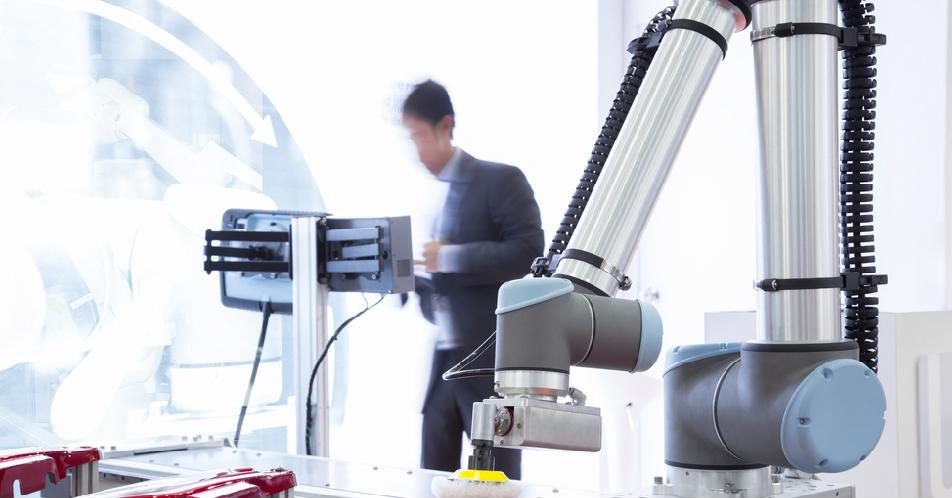-
Subscribe to Blog:
SEARCH THE BLOG
CATEGORIES
- Aerospace
- Asset Maintenance
- Automotive
- Blog
- Building Products
- Case Studies
- Chemical Processing
- Consulting
- Food & Beverage
- Forestry Products
- Hospitals & Healthcare
- Knowledge Transfer
- Lean Manufacturing
- Life Sciences
- Logistics
- Manufacturing
- Material Utilization
- Metals
- Mining
- News
- Office Politics
- Oil & Gas
- Plastics
- Private Equity
- Process Improvement
- Project Management
- Spend Management
- Supply Chain
- Uncategorized
- Utilities
- Whitepapers
BLOG ARCHIVES
- July 2025 (1)
- June 2025 (4)
- May 2025 (1)
- April 2025 (1)
- March 2025 (1)
- February 2025 (4)
- January 2025 (4)
- December 2024 (4)
- November 2024 (2)
- October 2024 (6)
- September 2024 (5)
- August 2024 (5)
- July 2024 (6)
- June 2024 (3)
- May 2024 (3)
- April 2024 (4)
- March 2024 (3)
- February 2024 (4)
- January 2024 (5)
- December 2023 (2)
- November 2023 (1)
- October 2023 (6)
- September 2023 (3)
- August 2023 (4)
- July 2023 (2)
- June 2023 (3)
- May 2023 (7)
- April 2023 (3)
- March 2023 (3)
- February 2023 (5)
- January 2023 (6)
- December 2022 (2)
- November 2022 (5)
- October 2022 (5)
- September 2022 (5)
- August 2022 (6)
- July 2022 (3)
- June 2022 (4)
- May 2022 (5)
- April 2022 (3)
- March 2022 (5)
- February 2022 (4)
- January 2022 (7)
- December 2021 (3)
- November 2021 (5)
- October 2021 (3)
- September 2021 (2)
- August 2021 (6)
- July 2021 (2)
- June 2021 (10)
- May 2021 (4)
- April 2021 (5)
- March 2021 (5)
- February 2021 (3)
- January 2021 (4)
- December 2020 (3)
- November 2020 (3)
- October 2020 (3)
- September 2020 (3)
- August 2020 (4)
- July 2020 (3)
- June 2020 (5)
- May 2020 (3)
- April 2020 (3)
- March 2020 (4)
- February 2020 (4)
- January 2020 (4)
- December 2019 (3)
- November 2019 (2)
- October 2019 (4)
- September 2019 (2)
- August 2019 (4)
- July 2019 (3)
- June 2019 (4)
- May 2019 (2)
- April 2019 (4)
- March 2019 (4)
- February 2019 (5)
- January 2019 (5)
- December 2018 (2)
- November 2018 (2)
- October 2018 (5)
- September 2018 (4)
- August 2018 (3)
- July 2018 (2)
- June 2018 (4)
- May 2018 (3)
- April 2018 (3)
- March 2018 (2)
- February 2018 (2)
- January 2018 (1)
- December 2017 (1)
- November 2017 (2)
- October 2017 (2)
- September 2017 (1)
- August 2017 (2)
- July 2017 (2)
- June 2017 (1)
- April 2017 (3)
- March 2017 (3)
- February 2017 (2)
- January 2017 (2)
- December 2016 (2)
- November 2016 (4)
- October 2016 (4)
- September 2016 (3)
- August 2016 (6)
- July 2016 (4)
- June 2016 (4)
- May 2016 (1)
- April 2016 (3)
- March 2016 (4)
- February 2016 (2)
- January 2016 (4)
- December 2015 (3)
- November 2015 (3)
- October 2015 (1)
- September 2015 (1)
- August 2015 (4)
- July 2015 (6)
- June 2015 (4)
- May 2015 (7)
- April 2015 (6)
- March 2015 (6)
- February 2015 (4)
- January 2015 (3)
CONNECT WITH US
Tag Archives: Digitization
The automotive industry has faced many challenges since the first cars rolled out of factories in the 1800s. Automobiles have become an integral part of society as a means of transportation for people and goods.
Given the importance of vehicles, many automotive companies focus on research, development, and innovation to deliver the best products to customers.
Automobiles Are Getting Smarter
The future of automobiles involves offering additional smart technology and features. We’ve come a long way since the days of steam-powered cars. In those times, vehicles consisted of a seat with wheels powered by an engine. In contrast, today’s automotive companies are in a constant battle for the latest features.
Car manufacturers first removed the need to shift with automatic transmission, and then they removed the need for maps with GPS. Now, they’re working on removing the need for drivers to control cars.
With automakers hard at work developing self-driving cars, experts see future roads filled with cars that can drive themselves. Radar sensors and complex algorithms can help accomplish this.
Machine-learning technology plays a significant role in the safety and navigation of self-driving cars. It creates a map of the surrounding area based on sensors. Meanwhile, control features monitor other vehicles. The data powers the understanding of the surroundings.
Complex software could process the data to operate the vehicle. With this technology, the car knows the direction to take, how to steer, when to accelerate, and when to hit the brakes. In the future, automobiles will operate themselves, with vehicle occupants becoming mere passengers.
Development is expected to wane in 2023. However, companies continue to take steps toward this goal, albeit at a slower pace.
Self-Reliant Cars
Not only are cars becoming smarter, but they are also more self-reliant. Companies are working on features to reduce vehicle maintenance. One example is regenerative braking.
Automobile brakes rely on tremendous force to stop the vehicle. Regenerative braking takes the excess kinetic energy that otherwise goes to waste and turns it into electricity. The motor then receives the electricity as power.
Mobile information integration is another factor. Many car owners frequently worry whether their vehicle is in good condition. Drivers do not want to take on a cross-border drive only to find something is wrong in the middle of the trip. Information integration could prevent that.
One future service possible through mobile integration information is preventive maintenance. With this, the car becomes capable of monitoring its own systems and doing self-diagnosis. It relays key information to the owner. As a result, car owners get an early warning about their vehicles’ operational performance and potential issues.
Technology Integration
Another key feature of future cars is integration with technology. We live with smart technology everywhere. From computers to smartphones, we are a voice command away. Why not integrate cars into the mix?
Volvo has already taken a step toward this. Partnering with Google, the automotive company is planning to introduce features to allow car owners to use voice commands with their vehicles. Examples include the following:
- Turning the car on and off
- Controlling the heating and cooling systems
- Providing car information
Integrating technology could also mean making better use of time spent on the road. Most people equate their daily commute to lost time. That could change with the right technology. The goal is to deliver productivity apps in the car.
Future vehicles would allow owners to do the following on the road:
- Making calls
- Joining meetings
- Checking emails
- Work on presentations
What is lost in the commute could be brought back with the right technology integration. However, with all the new features and integration, the issue of privacy comes up. Customers expect personalization, but that means providing personal data. This means automotive companies must have safeguards in place to protect car owners’ personal information.
Meeting Customer Expectations
Modern customers have varying expectations, and there is no single vehicle that can meet all customer needs. Instead, car manufacturers offer a variety of options.
That has led to the development of crossover vehicles. The idea is to give people an in-between option. Need more space than a car without going with a truck? You can now choose from a wide range of crossover vehicle models.
Innovation Is the Mindset
Having an innovative mindset is the key to remaining competitive in the automotive industry. These new features improve customer experience. When people choose between cars, they typically go with one that offers the functions they need. Advanced technology could influence consumers’ choices of vehicles.
Either manufacturers disrupt the industry, or they will get disrupted. Everyone is trying to create the next best thing to offer the public. They should never stop innovating, not only in terms of car features and performance. Using new technology, manufacturers could develop new business models.
Traditional business models for automakers include vehicle sales, after-sales services, and financial services such as loans. Advancements in technology can improve these services. For instance, social media platforms create an opportunity for market research. These platforms can also be a channel for after-sales services.
Moreover, websites and apps can now process financial data. These processes are more accessible to customers through technology.
New business models are developed, too. Mobility as a service (MaaS) and cars as a platform are good examples. With MaaS, customers can book vehicles for specific tasks. Ride-sharing apps are an example of that, as they are starting to eliminate the need for some people to own a car. That does not mean doom for automakers; it presents an opportunity to adjust their focus instead.
Innovation provides flexibility for manufacturers. It allows automotive companies to be prepared for disruption, which can happen anytime.
Learning From the Past
As the recent COVID-19 pandemic has proven, the supply chain is highly vulnerable. One small change can cause a ripple effect, disrupting the entire chain. Costs tend to go up in that scenario, and it is the customer who pays for that.
The COVID-19 pandemic severely affected the entire global supply chain. All industries felt the consequences of shutdowns. According to studies, the auto industry was among the hardest hit. Study results showed that over 50% of the auto sector said the disruption to them was very significant. That was the highest proportion across all other industries in the survey.
The biggest supply chain issue that affected the automotive industry was the automotive microchip shortage. Semiconductors and computer chips are crucial in powering modern vehicles’ advanced features. The semiconductor shortage resulted in production almost grinding to a halt.
Automotive production processes have not yet fully recovered from these shortages. As a result, auto experts remain unsure about whether now is a good time to buy a car.
The silver lining is digitization. The pandemic accelerated automotive companies’ progress in adopting new technology. It helped them recover and develop new supply chain processes.
The pandemic was not the first disruption the auto industry experienced, and it surely will not be the last. Automakers should expect more to come, as future disruptions could come from their progress.
What the Future Holds for the Automotive Industry
It is interesting to see how individual vehicle ownership could become obsolete. The current popularity of ride-sharing apps and other MaaS platforms shows that many customers prefer this means of transportation. This is also why automakers are focusing on driverless technology.
That means innovation is turning the automotive industry away from its current business model. Instead of losing to new customer preferences, automotive companies are leaning toward these changes. In doing so, they remain in control. This flexibility could be a significant aspect of future innovations in the automotive industry.
* This article is written by Cedric Jackson. Cedric is a freelance writer who is passionate about internet marketing, automotive, travel, and the entertainment world.
Adapting to new trends often comes in waves. We’d prefer if we could pace ourselves and anticipate new technology, but it’s never that simple in a digital landscape.
As technology improves, companies must adapt. Adapting to new technology can save hundreds of thousands of dollars in operational and administrative costs. Moreover, the mere appearance of adoption can make the difference in clients perceiving you as a reputable thought leader or an obsolete brand past its prime.
Your intention, of course, is to keep your brand relative and alive. That is why prepping your company’s culture, assets, and methodology to abide by digital trends is paramount.
Optimization Through Digitization
The time of pen and paper is a bygone era. As more companies move their documentation management to online cloud storage platforms, it opens the door to time, space, and improved organization.
Consequently, it allows progressive brands to accomplish more with their time than brands that haven’t adjusted their document management. Not only this, but file sharing is becoming more expected by consumers as opposed to traditional means of communication like snail mail.
Digitizing company documents can also improve the quality of life for most HR workers as it can reduce the footprint of files they need to keep track of physically.
But it’s not only for convenience. If data is being shared via e-mail, it faces the possibility of malicious online threats. That’s why data encryption and security measures are in place to protect sensitive documentation belonging to companies.
Although transforming all physical documents to a digital format may be an involved and large task at first, the benefits of time savings and organization can vastly outweigh the initial time investment. However, it needs to be done in a way that can be repeatable on a daily basis. The new system of conducting work processes digitally needs to be scalable. Physical methods should be put away. Digital forms, communication, and organization should take their place.
It can often feel daunting to convert thousands of documents into digital formats. That’s why many brands hire consultants to aid them in arranging their systems in a way that can be easily categorized, implemented, and repeated.
Entering the Metaverse
The metaverse, one of the most recent and ongoing technological trends, is going to change all aspects of life, including average business daily life. If you’re unfamiliar with the concept, it is a virtual rendering and representation of the world we live in. You can imagine it like a video game at first, trying to imitate real life by making it appear as real as possible.
The metaverse does this, but the intent is that it will have practical application. For example, where today, to buy groceries, one must get up, go outside, drive to the store, walk around the store, purchase the merchandise, and return home.
These digital realities will strive to allow you to enter a virtual rendering of the same grocery store and simulate walking around and purchasing groceries. The difference is that you won’t have to leave your home. Your groceries will simply be dropped off via a drone, and that’s that.
We already see a glimpse of this in actuality through the popular app, Instacart, which enables distant customers to shop for groceries from their mobile phones.
The ability to access virtually and experience tangible things from a distance could imply major benefits for a lot of different applications.
It could allow clientele to browse inventory and specifications of a product that’s located on the other side of the world. It could allow physically disabled individuals the ability to shop on their own. The benefits are worth considering.
And that is what your brand must consider. What does its place in the metaverse look like? There’s certainly a host of ways that businesses can leverage the metaverse to their advantage, including the sale of NFTs to behave almost like a ticketing system to obtain real-life tangible items. Some other examples might include exhibiting product demonstrations for industrial machining companies or product testing a new design before its put on the market.
If you start now, your brand could be among the first early adopters of the metaverse when it eventually takes off and becomes one of the main alternatives to physical experience.
Be wary. The internet didn’t take off right away. And there will be plenty of naysayers that try to diminish the validity of the metaverse, but your company should be prepared to adapt if it becomes the next big thing.
Maintain Awareness of What’s Next
If there’s anything you take away from this, it should be to stay vigilant and aware of what’s creeping up on the horizon.
The metaverse might get big for a decade and then fizzle out. It might be replaced by another thing shortly after. The important thing to do is to remain conscientious of what’s coming and make decisions on whether or not and how you will adapt to meet the new evolution of technology.
Advancement is exponentially increasing, which means we have smaller and smaller windows of time to settle in the previous development before we have to move on to the next one. Don’t let anything slip by!
*This article is written by Ainsley Lawrence. View more of Ainsley’s articles here.
Few innovations have so saturated modern society quite as much as digital has. Perhaps the best example of all is in the consumer products space. From navigation apps, streaming media services, mobile devices, voice assistants and so much more, artificial intelligence tools and features are regularly used by approximately 85% of Americans, according to a 2018 survey conducted by Gallup. And that was three years ago — the percentage has almost assuredly risen considerably since then.
The ubiquitous nature of digitalization has essentially forced businesses to take steps toward incorporating the latest and greatest technologies into their production processes and strategies. Its implementation is evidenced at just about every stage of the supply chain.
Has your company embarked on a digital transformation journey? No matter where your organization is in this shift, there are a few important things to be mindful of to ensure that the changeover is as painless as possible. Be aware of these issues during your company’s digital transformation journey:
1. Transformations don’t always take
Once businesses makes the decision to move forward with a transformation, those who are new to the processes may underestimate how lengthy it all can be – and their chances of finding success. In other words, even though the presumption is going digital naturally increases efficiency, it doesn’t always come to pass.
For example, in 2018, directors, front office executives spent a combined $1.3 trillion on digital transformation initiatives, according to reporting done by Forbes. However, of that total, $900 billion was ill spent, as the transformations never took hold.
Why not? There are plenty of reasons, but as noted by Harvard Business Review, it may have something to do with decision makers’ failure to put the right strategy or mindset in place before the transformation actually begins. Employees — not to mention people, in general — are creatures of habit. Installing new systems and technologies with which they’re unfamiliar can lead to frustration and resentment. That’s why it’s important to establish what workers can anticipate; namely, the changeover may come with some rough patches in the beginning, but the end result will make the challenge worth the effort. Therefore, it is pivotal to define a digital transformation strategy to help evolve your organization, as per digital marketing firm Dash.
2. Provide ongoing training
In a similar vein, digital transformations are described as such because the change is often substantial, even though it may occur pieces at a time to avoid major interruptions in production. That’s why it’s important to ensure staff members have the instructions they need to utilize unfamiliar equipment — and can provide directions to customers who may have the same difficulty making the transition.
A classic example is in the manufacturing space. According to Oxford Economics, the speed with which manufacturers incorporate robotics into their workflows can dramatically enhance production. Indeed, the study found that increasing robot installations by 30% within the next 10 years could lead to a 5.3% uptick in global gross domestic product.
While just about all business decisions are time sensitive, a sudden infusion of robotics can cause confusion and consternation amongst workers, which is part of the reason why digital transformations so often fail. Ongoing training, seminars, and fielding questions from staff is essential to digital adoption so nothing gets lost in translation.
3. Consider a digital transformation consultant
Financial institutions, warehouses, manufacturers, and processing centers have all implemented digital solutions into their workflows in one form or another. While you as an owner must serve as a leader in these efforts, you may not have the level of expertise to effectively answer your workers’ questions. That’s where a digital transformation consultant can be worthwhile. In addition to ensuring work processes go more smoothly with digital elements as opposed to physical or analog, a digital transformation consultant traditionally specializes in whatever industry new tools or solutions are being rolled out, be it manufacturing, consumer products, life sciences, or food and beverage. In short, a digital transformation consultant can make the unavoidable growing pains of process changeovers less painful.
4. Recognize the reality of the digital divide
It sure seems like the world as a whole has gone digital, especially when you consider that a majority of citizens in a number of developing countries own smartphones, according to polling done by the Pew Research Center. But it’s important to understand that access to digital technologies is not as ubiquitous as it may seem at first blush. Look no further than the United States. In a separate survey also conducted by the Pew Research Center, nearly 80% of homeowners who live in or along the outskirts of the city have broadband internet connections. However, less than two-thirds of Americans who live in rural neighborhoods can say the same.
Similarly, 83% of suburban residents own smartphones, Pew found. That percentage drops to 71% for Americans living in rural climes — a 12% gap.
Translation: If you’re looking to grow your business and cater to more customers, you may need to continue providing legacy services until digital technology and the accompanying infrastructure casts a wider footprint.
5. Make sure it’s scalable
While just about every industry has gone through some kind of digital transformation journey, they’re often confined to one particular department or sector, typically the one that needs it the most. In a recent survey of 200 manufacturing senior executives in the U.S. and Canada, more than half of the execs polled said their industrial internet-of-things innovations were small in scale and could not be subsumed by other units, IndustryWeek reported. This may be due to the pinch points that are so often associated with integration.
Making these efforts more scalable requires ongoing communication among departments, step-by-step instructions tailored to each department and selecting an integration platform that is user-friendly and fosters collaboration, IndustryWeek advised.
Transforming your work processes won’t be done overnight and it may not go exactly as you intended. However, USC Consulting Group has expertise in many different industries and can help your employees adopt and adapt to a new production approach more seamlessly than going about it on your own. Contact us today to learn how we can help.
Pulp and paper producers worldwide are expected to experience modest growth through Q3 2019, per Moody’s Investor Services, which predicted industry-wide revenue increases of 2 to 4 percent. This is welcome news for the businesses navigating this mercurial space. However, these organizations should avoid complacency, as several sector-specific developments necessitate shop floor nimbleness, an essential operational characteristic only achieved through the pursuit of continuous improvement and optimization. Here are two overarching trends affecting the pulp and paper industry, and how firms in the sector can optimize their processes for success:
Expanding worker and skill shortages
The blue collar workforce in the U.S. and abroad is shrinking, leaving organizations across numerous industries without the manpower they need to meet demand, Bloomberg reported. The companies within the pulp and paper sector are certainly feeling both the direct and indirect effects of this situation. Timber providers everywhere are struggling to recruit and retain loggers. The logger talent pool is expected to decline 13 percent between 2016 and 2026, according to analysts at the U.S. Bureau of Labor Statistics, who anticipate just 48,400 of these workers will remain in the states by the end of the aforementioned period. This development is immensely problematic for pulp and paper businesses, particularly those that source from domestic timber firms.
In addition to grappling with worker shortages in ancillary sectors, pulp and paper companies are dealing with workforce-related issues of their own – most notably, changing skill requirements for production staff. These organizations are modernizing their equipment and workflows out of necessity, swapping traditional hands-on setups for digital alternatives that require judgment and technical know-how rather than brute strength and muscle memory, pulp and paper recruitment consultant May Ooi wrote for LinkedIn. For instance, the robotic assets that now propel production areas require not only operators but also support staff who perform specialized tasks such as stock preparation. Unfortunately, many modern mill workers are not equipped to fulfill these duties, per the Confederation of European Paper Industries.
To address these issues, pulp and paper producers must make significant changes, starting in the procurement department. Here, personnel must trade relationship-based acquisition methods for strategic sourcing initiatives that facilitate optimal flexibility via expanded vendor pools. Using this approach, businesses in the sector can easily adjust to account for logistical problems or price increases linked to staffing issues in the forestry industry and elsewhere. Internal apprenticeship and upskilling programs are essential to address internal skill shortages, making it possible for employees with outdated expertise to acquire the knowledge they need to contribute in more modern production settings.
A growing need for innovation
The emergence of innovative digital technology has caused great damage to the pulp and paper industry. Once-essential products such as newsprint and letter paper have devolved into bottom-line burdens due to the growth of online journalism and the crystallization of consumer-grade messaging technologies. Even greeting cards have gone digital, forcing niche mainstays such as Hallmark to abandon paper and and cultivate alternative revenue streams, CNBC reported.
Keen industry leaders found a novel solution: embrace the force attempting to destroy them. Instead of bemoaning the emergence of internet-based services and solutions, pulp and paper companies in Wisconsin took advantage of the trend by realigning their processes to produce brown paper products such as cardboard, a critical ingredient for ecommerce giants such as Amazon, which ships millions of packages per day. Paper producers are switching out their white paper production lines – the apparatuses used to make common commercial offerings such as copy paper – for these brown paper alternatives, the darker, pulp-based covering used to sheath cardboard boxes, according to the Wisconsin Economic Development Corporation.
By going after this business and incorporating innovative process improvements – most notably, cardboard recycling – these firms not only survived but prospered. In fact, the producers that dot the Badger state are developing the blueprint for industry success through their embrace of brown paper products, The New York Times reported. This production shift has allowed pulp and paper companies in the state to tap into a hot market rather than toil away in an attempt to find success in a failing niche.
However, not every company should decide to jump on the brown paper bandwagon. It is highly competitive, with big players currently occupying the space. Plus, if everyone transitions in that direction, then the issues in white paper get repeated. Instead, optimizing production facilities with a third-party operations management firm is an option that may result in less capital spending versus the conversion to brown paper.
Similar events are unfolding worldwide. Pulp and paper producers everywhere are rolling out fresh products designed to attract new customers and facilitate operational sustainability, per CEPI. For instance, a large number of organizations navigating the arena are experimenting with fiber-based offerings, which are touted as the environmentally-friendly substitute for plastics. Pulp and paper manufacturers on the outside looking in on these developments would be wise to take action and implement shop floor optimizations that support innovation at all levels. Without forward momentum in the form of new workflows and approaches, laggards are likely to lose significant ground and risk falling out of the marketplace entirely. Now is the time to take action.
That said, pulp and paper organizations that pursue optimization in an effort to navigate these developments might find themselves struggling to catalyze change from the inside. This is where evidence-based external expertise comes in handy, lending shop floor stakeholders at all levels the guidance and perspective they need to move forward with sustainable process improvements. Here at USC Consulting Group, we provide such assistance. In fact, our consultants have been helping enterprises within the pulp and paper sector for decades, collaborating with leaders to reshape their workflows and workforces, and adjust to industry upheaval.
Contact us today to learn more about our work in the pulp and paper space, and how we can help your organization weather change.
Businesses across multiple industries have embraced digital transformation (DX) technologies. In fact, an estimated 89 percent of organizations worldwide have embarked on digitization, according to the International Data Corporation, by reassessing their current assets and leveraging them in new ways.
But while these innovators swap manual processes for digital alternatives, companies in the food and beverage space preserve their existing processes, despite growing customer demand for more innovative services.
Modern consumers want convenient food purchasing experiences. Approximately 9 percent of American consumers, or 10.5 million households, purchased a meal kit between September 2017 and March 2018, and about 30 million more said they were considering doing so in the following five to six months, Nielsen reported. In addition to ordering ready-to-cook meals, many U.S. families are taking advantage of online grocery delivery services. As a result, web-based grocery sales are growing 10 times faster than in-store sales, Brick Meets Click found.
Despite these explosive developments, food and beverage companies have not embraced digitization en masse. Why? Because many operational challenges prevent these organizations from moving forward and meeting the needs of their tech-savvy consumers signing up for Blue Apron and Instacart. Here are three roadblocks of food and beverage digitization and how some innovators in the industry are working to overcome them:
1. Moving from in-store to online
Major food and beverage firms such as Coca-Cola have long relied on brick-and-mortar partners. This sales channel is no longer viable by itself. Businesses in the space must meet consumers where they are, which is online.
But how does an organization make this switch when their route to market has always run through grocers and other sellers? In the case of Coca-Cola, the answer is trial and error. The soda giant juggles multiple experimental initiatives aimed at engaging customers online, including partnerships with Amazon and Uber Eats, and direct-to-consumer order fulfillment for specialty products. In doing so, the brand hopes to pinpoint and cultivate a successful and sustainable web-based sales channel and carve out a clear path for moving past its traditional store-based business model.
2. Adjusting to consumer preferences
Consumers that shop for groceries online or cook with meal kits normally have good reasons for embracing these products and services. A single parent might get meals through HelloFresh to save time, while a young couple might choose to shop with Peapod out of the desire to buy local. Food and beverage businesses have to tailor their sales and distribution models to meet the distinct needs of multiple demographics, something that is not so easy for larger brands that have been selling the same products the same way for decades.
Campbell Soup Company grappled with this very issue in 2017, when it attempted to enter the digital marketplace, according to Bloomberg. To put it simply, its canned soups did not have a good reputation among the younger customers that populated the sales channels that Campbell pursued. So the company got creative and developed an artisanal soup delivery service that shuttled variations of its core products, made with fresh, local vegetables, to source-conscious consumers. The soups even arrived in glass mason jars. This move allowed the brand to meet the needs of new customers and move into the digital realm.
3. Getting digital face time
Workable application-based delivery workflows or an e-commerce presence is not enough for latecomers in the food and beverage sector. If these businesses are serious about looking to attract customers of the digital age, they must also roll out promotional efforts that draw clicks, likes and shares. For businesses that have banked on their decades of brand capital, the prospect of recultivating this cachet on new channels can seem daunting or even impossible.
General Mills recently faced this challenge when it began exploring new digital opportunities, Food Dive reported. Like Coca-Cola, the food and beverage conglomerate looked into multiple avenues and eventually found a way to form connections with online consumers through recipes and meal suggestions. The company hopes these relationships will serve it well as it traverses groundbreaking operational territory in an attempt to find success with digitization.
Here at USC Consulting Group, we’ve been collaborating with organizations in the food and beverage space for decades, helping them transform their operations and adapt to marketplace shifts of all kinds. Connect with us today to learn more about our experience in the industry and how we can assist your organization as it moves forward.
Internal and external forces are catalyzing change in the global energy sector. From the development and implementation of cutting-edge operational technology to the widespread embrace of innovative consolidation and partnership strategies, transformation abounds. But few of these factors are as influential as the ascendance of shale gas.
Over the last decade, energy firms worldwide have drastically expanded their shale production, causing great upheaval through the displacement of more traditional resources. U.S.-based oil and gas companies are spearheading this charge, producing more than 40 billion cubic feet of dry shale gas per day, according to research from BP. Demand for the commodity continues to increase across the globe as governments search for clean alternatives to coal. Established shale producers in America as well as those in new markets such as Australia and China may soon have to scale up in order to meet the expanding needs of their customers.
Here are three actionable strategies that energy companies here and abroad can use to maximize their operations and find success in the ever-growing shale market:
1. Install innovative production technology
Small and midsize organizations, not energy behemoths, are powering the U.S. shale revolution. How? By developing advanced drilling technology and techniques that now underpin virtually all shale production. Energy companies that wish to take advantage of the healthy shale market and scale up their workflows must pursue similar strategies. Of course, businesses adopting this strategy are unlikely to uncover shale production innovations as transformative as horizontal drilling or hydraulic fracturing. That said, there are powerful new technologies that can facilitate the optimization needed to succeed in the current energy marketplace.
For instance, according to Reuters, many larger firms looking to expand their shale operations are moving forward with digitization efforts that can augment established extraction methodologies. Royal Dutch Shell, the third largest oil and gas company in the world, has begun putting into place connected infrastructure capable of bolstering its inland and offshore shale workflows. Shell engineers now make use of electronic devices capable of separating sand generated during hydraulic fracturing from useable petroleum product. They also leverage DNA sequencing to analyze rock formations prior to drilling. Earlier this year, Shell unveiled a functioning automated drilling platform that allows engineers to dig wells anywhere from the company’s control center in Calgary, Alberta. This asset is expected to generate as much as $2 billion in annual shale production cost savings.
Energy companies new to the shale space would be wise to follow in the footsteps of Shell. They should pursue digitization because cutting-edge technologies can bolster production while cutting costs related to workflow inefficiency and extraction and drilling failure.
2. Focus on supply chains
The supply chains that power shale production differ from those associated with more traditional energy products. Upstream workflow components center on complex infrastructure development and drilling operations that require all manner of support, including specialized waste management and transportation services. The average shale pad contains more than 20 moving operational parts, all of which must function in sequence and on time to meet production goals, according to analysts at EY.
For oil and gas firms new to the niche with plans to scale, configuring supply chains that support this kind of work is no easy task, and simply creating back-end processes of this scale is only half the equation. Organizations must optimize their supply chains to harness the full power of their shale operations and meet demand. But how?
Facilitating effective collaboration among all parties, internal and external, is one solution. When shale producers and suppliers communicate and plan properly, the likelihood of error falls and the inefficiencies that stem from these small missteps fail to materialize. Devoting more resources to materials management is another workable optimization strategy. Shale production involves solid, liquid and gas ingredients, most notably hydraulic fracturing solutions filled with proppants and chemical additives. Oil and gas companies must have supply chain components that can provide key operational materials on the front end and remove byproduct following production. Firms that successfully streamline these activities can support lucrative shale production workflows with high yield.
3. Bolster workforce training
It takes the collaboration of specialists from a variety of industries to get shale extraction sites up and running. From the construction teams that install foundational infrastructure to the drill operators who drive everyday activities, these workflows are full of talented contributors with specialized skills of all kinds. Companies ramping up their shale operations in light of marketplace developments have to cultivate and expand their talent pools to meet the needs of this industry niche.
But the ongoing skills shortage in the sector may make this difficult. As a result, upskilling existing talent is the only workable solution. Oil and gas organizations can divert workers from verticals with declining prospects and retrain them for work in shale production teams. This move allows energy firms to boost their shale output without investing immense amounts in hiring and recruitment.
Together, these strategies can help businesses in the oil and gas industry take advantage of the continued acceleration and intensification of the shale gas revolution.
Here at USC Consulting Group, we’ve been working with businesses across numerous industries for more than 50 years, including those in the oil and gas space, helping them adapt to marketplace transformations of all kinds. Connect with us today to learn more about our work.
















